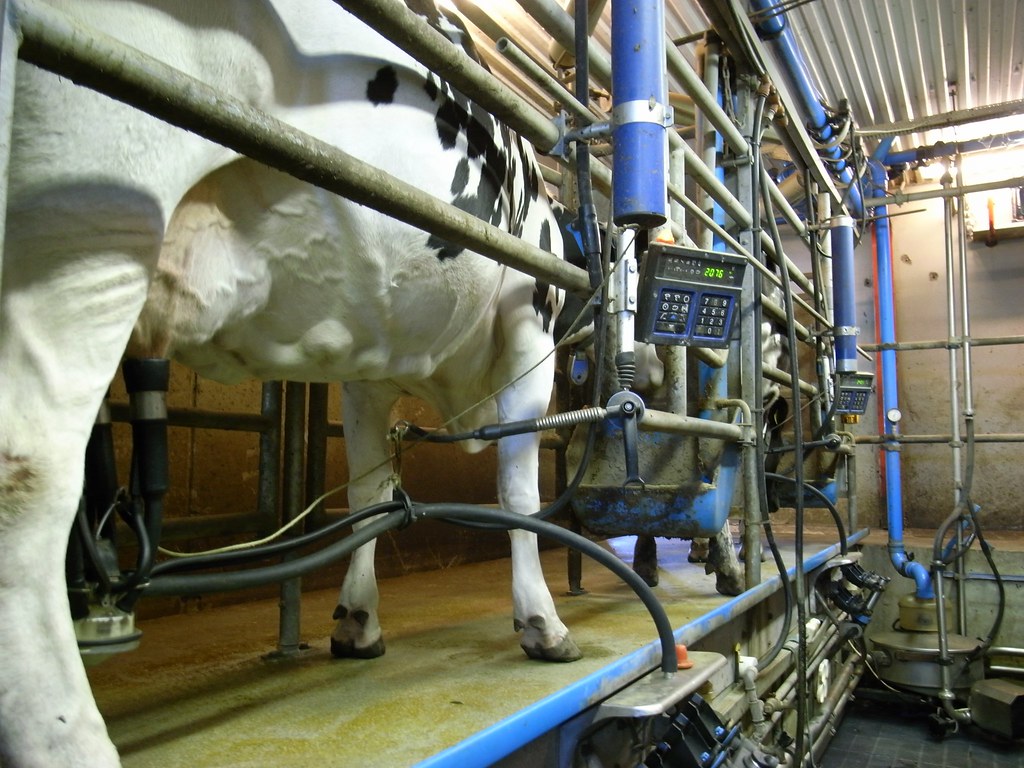We know how much food colouring has been added to a recipe by the intensity of the colour. Food colouring is made of dye molecules which absorb certain colours of light and scatter others. Measuring the concentration of food colouring is easy - all that is needed is a light emitting diode (LED) and a light sensor (link to laser cut detector). But how do we determine the concentration of molecules that are not coloured? One method that has recently gained a lot of attention is Raman spectroscopy. Put simply, a laser is used to excite the molecules, then a camera picks up a characteristic fingerprint derived from the way the molecules jiggle/vibrate due to thermal motion.
Michel Nieuwoudt and others in the Photon Factory have found that Raman spectroscopy can allow for the determination of all of the important components in milk such as protein, fat and health indicators. In a previous post I wrote about measuring the contaminant melamine in milk using gold coated Blu-ray discs which amplified the weak Raman signal to something detectable. This month we published a follow-up work that aimed to integrate milk analysis into a device that could be used in a dairy shed.
 |
| CC BY-NC 2.0 Giving Milk by Morton Just |
The first challenge was finding a device into which to integrate the analysis. We wanted to make use of microfluidic technology, which uses techniques from the semiconductor industry to make very small fluid channels on the micron scale (your hair is about 100 microns across). Advantages include being able to pack many tests onto a single device and having very precise control over the liquid. Traditional microfluidic requires a lab full of pumps to operate, which is not conducive for analysis in a dairy shed, so we turned to the newer field of centrifugal microfluidics. Combining compact disc technology and microfluidics allows for standalone operation with pumping driven by the centrifugal force as the liquid pipetted into the centre of the disc is spun outwards through microfluidic channels.
 |
| CC BY 3.0 LabDisk for SAXS |
To make this approach viable we have to use injection-moulded plastic discs to keep the costs down and to allow for large scale production of many discs that can be delivered to the farmer.
The problem with performing Raman analysis in a plastic device is that the plastic has a very strong Raman signal, which drowns out the weak Raman signal from the milk. In order to solve this problem we removed the plastic between the laser and the milk - holding the milk in an open channel using the capillary force. This is the same force that pulls water up the sides of a glass to form a meniscus.
 |
| Cross sections of the multilayer disc with the laser cut channel on the bottom, a layer of double sided tape in the middle and a top cover which leaves some of the channel open |
The main contribution of the paper was working out how to use the centrifugal force to fill the channel without it overflowing by balancing the centrifugal force (controlled by the disc speed and distance from the centre of the disc) and the capillary force (controlled by the size of the channel). Something else I found quite cool was that the capillary force was enough to hold the liquid upside down in the channel, which means the detection could be done from underneath as in a traditional compact disc player.
We made use of this device to detect the contaminant melamine in milk using Raman spectroscopy and were able to detect down to the parts per million range (limit of detection (LOD) of 209 ppm). This is much more sensitive than infrared spectroscopy (LOD of 1300 ppm), but for higher sensitivities, the Blu-ray SERS surface would be needed (LOD of 70 ppb).
The applications for this work go further than just milk analysis. This opens up all sorts of vibrational analysis such as infrared and Raman spectroscopy to the centrifugal platform which could provide disease diagnostics, water analysis and DNA detection using these advanced techniques.




No comments:
Post a Comment